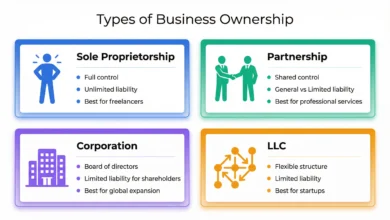From Traditional Marketing to Remarkability: A Definitive Guide for Startups

In today’s noisy digital world, attention is earned—not bought.
This guide explains how startups can move beyond classic advertising budgets and build products so remarkable they drive organic buzz. By blending behavioral science, user insight, and lean experimentation, founders can build products that naturally attract advocacy, loyalty, and growth.
1. Rethinking Marketing: From Paid Promotion to Product-Led Buzz
Traditional marketing relies on paid channels, repeated exposure, and wide-reach campaigns to generate awareness. It treats consumers as passive audiences who absorb messages.
Remarkability flips this model by treating the product itself as the primary marketing engine. A truly remarkable product sparks conversations, social sharing, and peer-to-peer recommendations without heavy ad spend.
Key differences include:
-
Paid vs. earned attention
-
Message-centric campaigns vs. experience-driven design
- Broad targeting vs. focused engagement with influencers
| Aspect | Traditional Marketing | Remarkability Approach |
|---|---|---|
| Core Driver | Paid media and exposure | Product experience and innovation |
| Role of the User | Passive recipient | Active promoter and advocate |
| Goal | Awareness and reach | Organic sharing and loyalty |
| Key Metric | Impressions and clicks | Shares, sentiment |
2. Core Attributes of a Remarkable Offering
A product or service becomes remarkable when it delivers one or more of these attributes:
-
Unexpected innovation in function or form
-
Dramatic over-delivery on a basic promise
-
Personalization or customization at scale
- Emotional resonance that compels sharing
Each attribute must align with a clear user need or pain point. Scientific studies of consumer behavior show that surprise and emotional arousal significantly increase word-of-mouth transmission and memory retention.
3. Engaging Innovators and Early Adopters
Innovators and early adopters are the social catalysts for new ideas. They share strong motivations:
-
Desire to solve problems before the mainstream
-
Pleasure in testing unproven concepts
-
Social status gained through discovery
To attract them, startups should:
-
Offer exclusive trials or beta access
-
Create dedicated online communities or ambassador programs
- Collect feedback publicly to reinforce a sense of participation
Academic diffusion models confirm that momentum among these groups predicts broader market take-off.
4. Measuring Remarkability
Tracking traditional metrics like impressions or click-through rates misses the essence of product-led buzz. Instead, focus on:
-
Share rate: percentage of users who recommend or repost
-
Engagement depth: time spent interacting with the key feature
-
Viral coefficient: average number of new users each advocate brings
- Sentiment analysis: distribution of positive vs. neutral mentions
Combine quantitative metrics with qualitative user interviews. This mixed-methods approach ensures you capture both scale and the emotional drivers behind each share.
5. Aligning Limited Startup Resources
Startups must balance resource constraints with the need for standout features. Best practices include:
-
Implementing a lean innovation process (build-measure-learn loops)
-
Allocating a fixed percentage of budget to experiments on core differentiation
-
Forming cross-functional squads that own both product and marketing outcomes
- Partnering with micro-influencers whose audiences match your ideal user profile
These tactics preserve agility while prioritizing the elements that make your offering remarkable.
6. Common Pitfalls and How to Avoid Them
Even promising concepts can fail to catch fire. Avoid these mistakes:
-
Overinvesting in peripheral add-ons instead of the signature feature
-
Ignoring early adopter feedback and missing key refinements
-
Relying solely on a launch campaign rather than ongoing product iteration
- Failing to document and share user stories that validate the remarkable claim
Anticipating these challenges lets your team course-correct before momentum stalls.
7. A Step-by-Step Roadmap to Remarkability
-
Conduct user-centered research to identify unmet needs and surprises.
-
Brainstorm features or experiences that flip user expectations.
-
Build a minimum viable prototype focused on the standout element.
-
Test with a small group of innovators, gather feedback, and iterate.
-
Refine your messaging to spotlight the most compelling proof points.
-
Launch with a dual focus on select advocates and broader soft release.
- Monitor share metrics, sentiment, and conversion, then cycle back to iteration.
Following these steps creates a self-reinforcing loop of improvement, buzz, and growth.
Beyond the Framework:
-
Craft narratives that weave user testimonials into your brand story.
-
Study case studies of startups that achieved breakout growth through product drama rather than ads.
-
Explore how AI-driven personalization and augmented reality can elevate your remarkable feature.
- Investigate platform strategies—how TikTok’s algorithm rewards novelty, or how podcast niches build devoted followings.
By committing to product-led remarkability and combining rigorous measurement with creative experimentation, your startup can transform every user interaction into an opportunity for organic expansion.
Crafting a Compelling Product Narrative that Amplifies Remarkability
A well-constructed story turns your product’s unique features into an emotional journey that customers want to share. Start by defining the core conflict your audience faces and positioning your product as the transformational solution. Weave in real user experiences, behind-the-scenes insights, or founder anecdotes to give the narrative authenticity and depth.
Consider structuring your narrative with these elements:
-
Origin Story: Explain why and how the idea emerged.
-
Challenge: Highlight the gap or frustration users experienced.
-
Resolution: Demonstrate how your standout feature resolves that pain.
-
Proof Points: Include testimonials, data, or vivid before-and-after scenarios.
Deliver the story consistently across touchpoints—website copy, social channels, packaging, and demos—to reinforce the remarkable element at every stage of the customer journey.
Real-World Examples of Remarkability on a Shoestring Budget
-
Dollar Shave Club
Launched with a low-budget, irreverent video that showcased its direct-to-consumer model and humor-driven brand voice. The clip went viral, drove massive sign-ups, and spurred earned media coverage. -
Glossier
Built entirely on community engagement and user-generated content. Rather than splurging on ads, Glossier spotlighted real customer stories on Instagram, turning fans into authentic brand ambassadors.
Each case proves that a striking idea, a focused audience, and clever use of free or low-cost channels can generate outsized impact without a massive ad budget.
– However, these examples are not without limitations; it’s important to note that results may vary depending on factors such as budget, market conditions, and execution quality.
Leveraging Emerging Technologies (AI & AR) to Create Standout Products
Artificial intelligence and augmented reality open new avenues for experiential differentiation. AI can personalize features and automate insights at scale, while AR immerses users in interactive product previews.
Key applications include:
-
AI-Powered Personalization: Dynamic recommendations, chatbots that adapt tone and content, and algorithmic feature tweaks based on real-time behavior.
-
AR-Driven Experiences: Virtual try-ons, guided tutorials overlaid on real environments, and spatial demos that let customers “experience” the product before buying.
-
Data-Fueled Iteration: AI analytics reveal which narrative elements or AR interactions drive the most engagement, enabling rapid refinement of your remarkable core feature.
Remarkability is not a marketing tactic—it’s a mindset.
When you design a product that genuinely surprises, empowers, or emotionally moves people, every user becomes a storyteller.
In a world overflowing with paid messages, the most powerful growth engine is still authenticity.
When your product becomes the story, marketing becomes momentum.
FAQ:
1. What does “Remarkability” mean in startup marketing?
Remarkability means designing a product so unique, valuable, or emotionally engaging that it markets itself through organic sharing, conversation, and word-of-mouth.
2. How can startups build remarkability without big ad budgets?
By focusing on innovative product features, emotional storytelling, and early adopter engagement instead of relying solely on paid ads.
3. What metrics best measure remarkability?
Share rate, engagement depth, sentiment analysis, and viral coefficient are stronger indicators of organic growth than impressions or clicks.
4. Can AI and AR enhance product remarkability?
Yes, AI enables personalization and predictive insights, while AR creates immersive experiences that deepen emotional connection and sharing potential.


